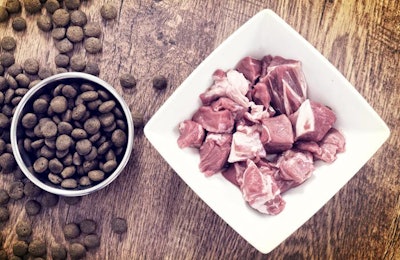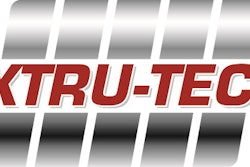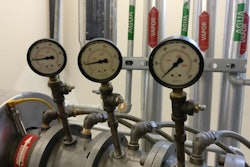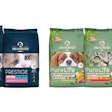
From Petfood Industry:
High-meat cat and dog foods have grown in popularity over the past few years, but despite their popularity, high-meat pet foods have some downsides in the safety and sustainability departments. Nevertheless, pet food industry professionals have suggestions to help dog and cat food manufacturers meet consumer demands for meat in pet food, while keeping pet food safety and sustainability in mind.
Last year, Petfood Industry questioned whether dogs are truly pure carnivores, and explored how including more meat in pet foods may mean greater competition with human food.
According to the Organization for Economic Cooperation and Development, the average American adult ate 198 pounds of meat in 2014; the average globally was 75 pounds. By 2024, those numbers are projected to increase to 207.5 and 78.3 pounds, respectively, a rise of more than 4% per person.
While some consumers and human food producers are turning to alternative sources of protein, the demand for meat continues to accelerate. At the same time, production of cattle, pigs and other animals frequently uses more resources than producing an equivalent amount of nutrition from plant sources.
However, pet food companies have increased their use of novel protein sources, such as kangaroo and green mussels. These proteins are often used because of perceived pet allergies or dietary intolerances, but scaling up supply of those ingredients often is not financially feasible.
High-meat pet food formulas may increase safety risks
Along with the demand for more meat, an increasing number of dog and cat foods buyers want that meat to be raw. However, tripling the amount of raw meat in a formulation also triples the pet food safety risk exposure, Will Henry, director of research and development for Extru-Tech Inc., said at Petfood Forum 2016.
Food safety is becoming a more prominent concern for the pet food industry, and pet food safety risks depend on the ingredients used in manufacturing, Henry said. Meats carry a higher risk of harboring dangerous pathogens than many other pet food ingredients. Therefore, high-meat dog and cat foods face more exposure to risks.
Managing those risks can be a difficult process, but it’s not impossible for pet food manufacturers who are willing to grow with pet food industry trends, he said. Meeting standards for pet food safety requires extensive documentation of the manufacturing process.


















